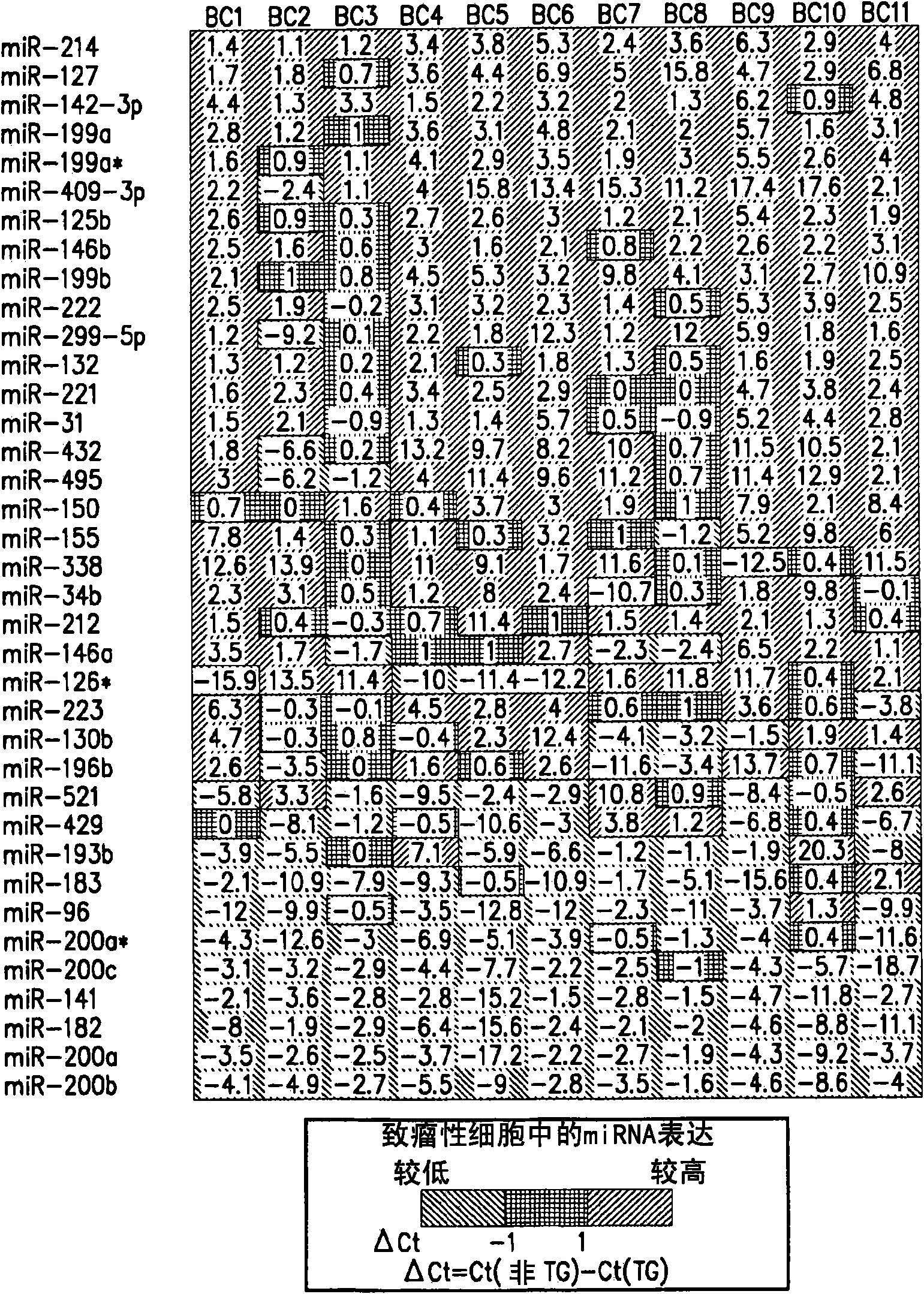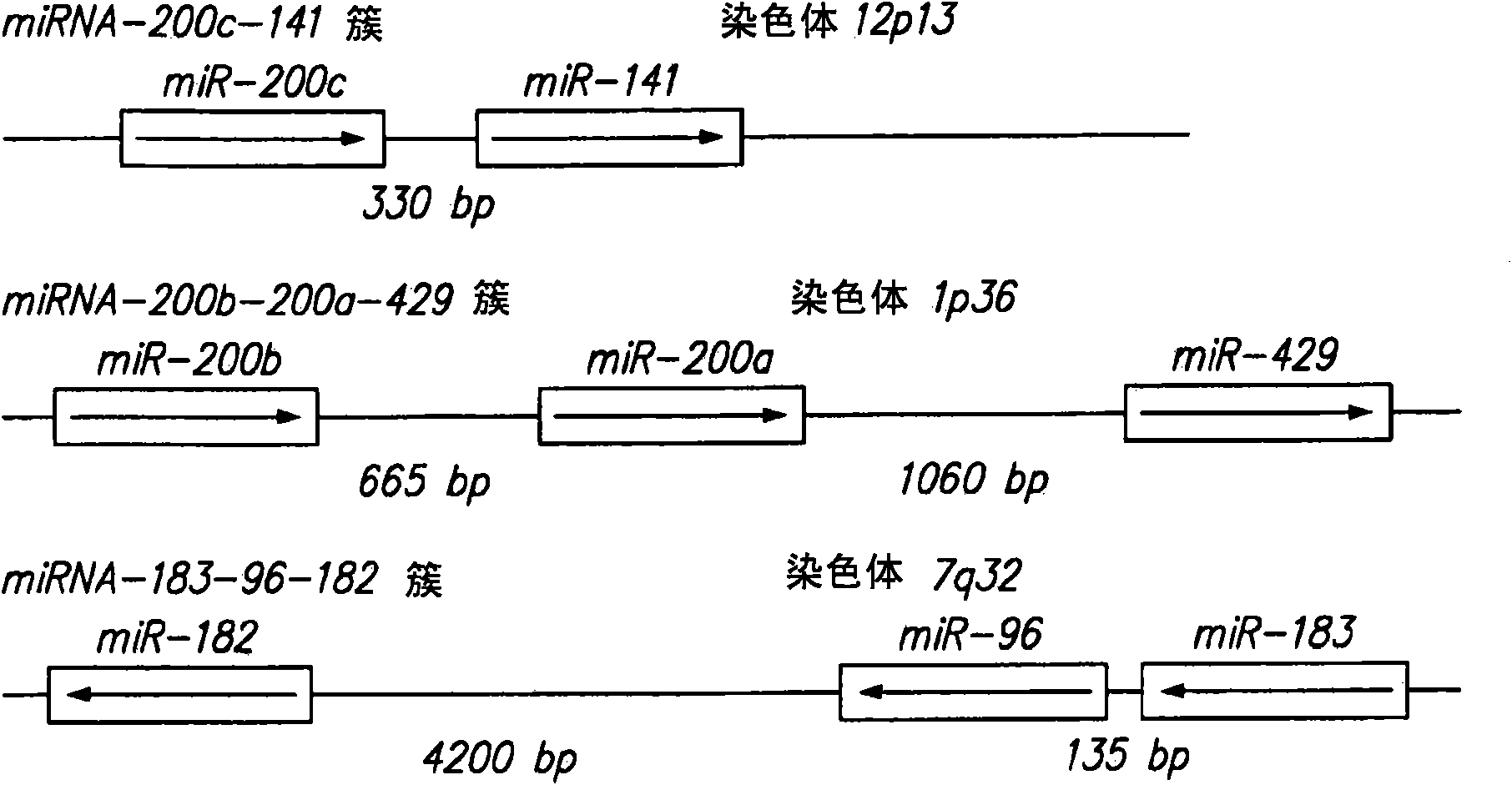Methods and compositions relating to carcinoma stem cells
A cancer stem cell and cell technology, applied in the field of microRNA, can solve the problems of killing and limited cell proliferation potential
- Summary
- Abstract
- Description
- Claims
- Application Information
AI Technical Summary
Problems solved by technology
Method used
Image
Examples
Embodiment 1
[0150] Identifying gene signatures of breast cancer stem cells
[0151] We had previously identified BCSCs as CD44 based on CD44 and CD24 expression + CD24 - / 低 pedigree. The expression of cell surface markers in normal mammary epithelial cells isolated from three breast reduction samples was defined as ESA + pedigree - (CD64 - , CD31 - , CD140b - , CD45 - ). We looked for BCSCs isolated from 6 patients (3 with primary malignant pleural effusions and 3 with mammary tumors grown as solid tumor xenografts in immunodeficient mice) with 3 reductions by microarray analysis. Differentially expressed genes between normal human breast epithelial cells produced by reduction mammoplasties. A panel of 186 genes was selected based on a two-fold difference in expression levels, with t-test P values < 0.005 for all samples. The false discovery rate (FDR) was controlled using the Beniamini-Hochberg procedure. According to the above criteria, the FDR of the genes in the list is le...
Embodiment 2
[0158] Development of markers useful as prognostic and predictive tools from formalin-fixed paraffin-embedded (FFPE) tumor specimens. The differentially expressed sequences in BCSCs identified herein were used to generate markers (in situ hybridization probes) to determine the number and location of tumor stem cells in formalin-fixed paraffin-embedded (FFPE) tissues. All breast cancer biopsy and slide specimens were analyzed by histological examination using thin sections of formalin-fixed paraffin-embedded material. Thus, a large collection of tumor specimens is maintained in the archives of the Department of Surgical Pathology across the country for the histological study of CSCs and the role they play in clinical outcome and response to adjuvant therapy.
[0159] The clinical significance of these findings was determined using tissue microarrays (TMA) containing tumor specimens with known clinical outcomes in formalin-fixed paraffin-embedded (FFPE). Prognostic or predictiv...
Embodiment 3
[0166] Targeting pathways that confer CSC resistance to standard cytotoxic chemotherapy. Targeting pathways that confer CSC resistance to therapy using exogenous miRNAs or synthetic shRNAs. Three different published methods have been used to deliver shRNA: liposome delivery (see Sorensen et al. (2003) J Mol Biol 327, 761-6), conjugation of shRNA to atellocolagen (see Takeshita et al. (2005) ProcNatl Acad Sci USA 102, 12177-82) and conjugation of shRNA to monoclonal antibody / protamine complexes (see Song et al. (2005) Nat Biotechnol 23, 709-17). The third approach uses antibodies that specifically target cancer cells. In the latter case, antibodies specifically binding to CSCs or targeting all cancer cells were tested. Identification of antibodies targeting CSC or all cancer cells in specific xenograft tumors by flow cytometry.
[0167] Xenograft tumors derived from tumors from 6 different patients were examined to determine whether systemic delivery of shRNA enhanced chemoth...
PUM
 Login to View More
Login to View More Abstract
Description
Claims
Application Information
 Login to View More
Login to View More - R&D Engineer
- R&D Manager
- IP Professional
- Industry Leading Data Capabilities
- Powerful AI technology
- Patent DNA Extraction
Browse by: Latest US Patents, China's latest patents, Technical Efficacy Thesaurus, Application Domain, Technology Topic, Popular Technical Reports.
© 2024 PatSnap. All rights reserved.Legal|Privacy policy|Modern Slavery Act Transparency Statement|Sitemap|About US| Contact US: help@patsnap.com










